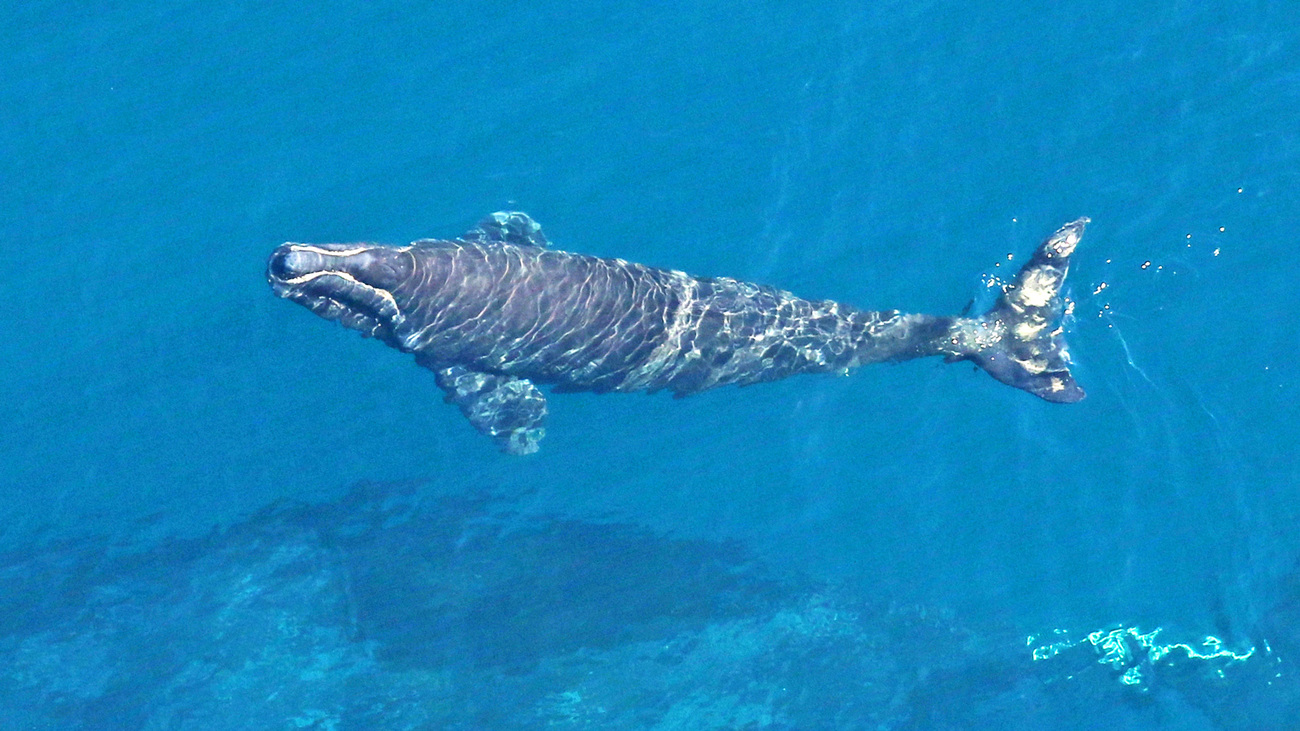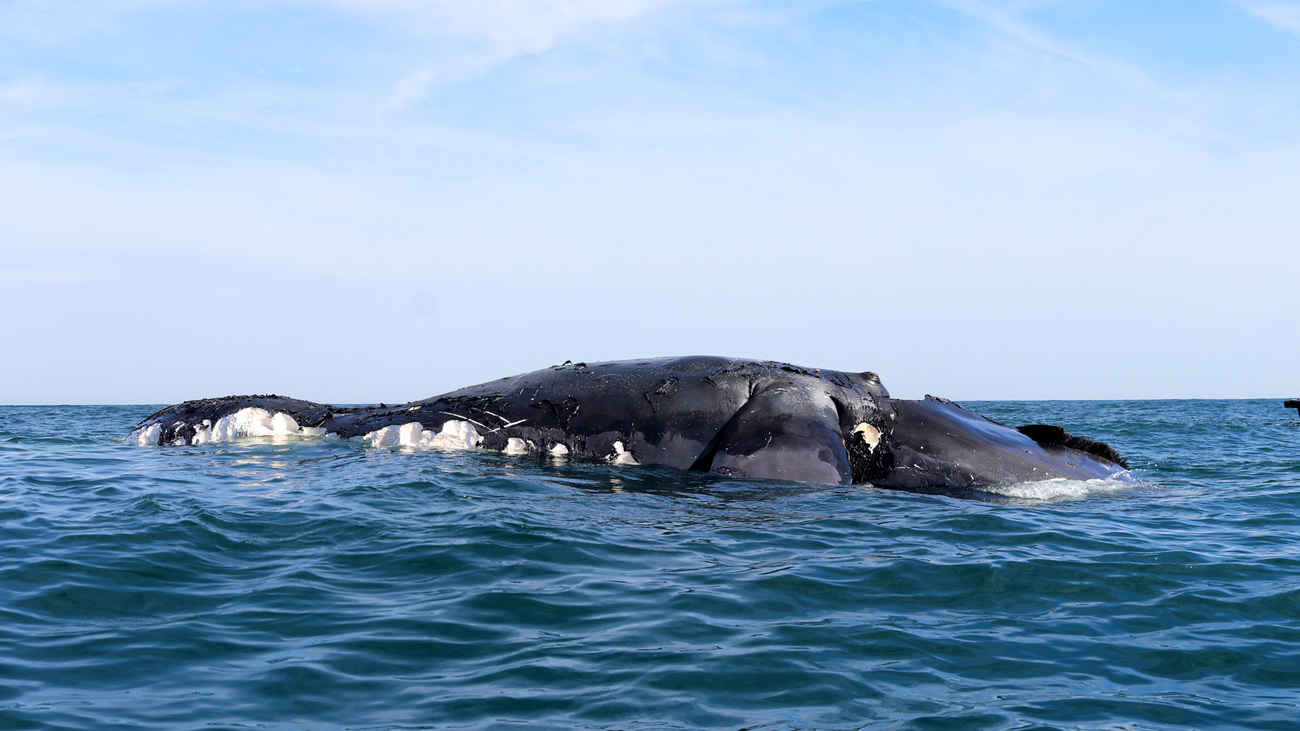Kathleen Collins
The hope and heartache of right whale calving season
The hope and heartache of right whale calving season
Every year, the eastern seaboard of the United States becomes a nursery for some of the biggest babies on earth: North Atlantic right whales. Each year we observe, track, and delight in every calf born and mourn every whale lost. The 2024 calving season has been a rollercoaster of hope and loss.

The situation for North Atlantic right whales is dire. Historically, it was estimated that right whales lived upwards of 70 years. Today, they are lucky to reach 40. Despite the abolishment of whaling in the US in 1971 and in Canada in 1972, right whales are not dying of old age and their main threats remain linked to human activity. They are killed by vessel strikes, entanglements, and the injuries and stress endured from these encounters. With only around 350 right whales remaining, modeling tells us that 50 births per year would create a stable population, 20 births can be considered a productive calving season, and fewer than 20 births per year over a sustained period would effectively mean extinction.
This current calving season holds the record as the second highest birthrate season of the last decade, with 19 calves born so far. Yet 2024 has also been a year marked with tragedy. Even in a banner year, losing just one calf is devastating, and we’ve already lost four. Another three whales—two calves born in previous seasons and one adult—have perished this year after being struck by vessels or entangled in fishing line.
It is difficult to be optimistic in the face of these tragedies. At the current rate of mortality and calving, the North Atlantic right whale is projected to be functionally extinct by 2035, just 11 years from now. Yet, I remain hopeful and determined, not just because the whales have come so close to the benchmark of 20 calves this season, but also because people are making great strides in finding ways to protect them.

Losses of the 2024 calving season
This season’s losses all started when Juno, a 38-year-old eight-time mother and two-time grandmother, was spotted with the first calf of the season off the coast of Georgetown, South Carolina just after Thanksgiving. But we didn’t have time to celebrate; shortly after, her new calf was seen with gruesome head injuries consistent with having been struck by a vessel.
Throughout the next month, the calf was spotted looking thin, but some of her wounds had healed and she was observed nursing. Then in early March, Juno was seen without her. The next day, the calf that kicked off this promising calving season was found dead on a seashore in Georgia.
Three other mothers who gave birth this season have since been spotted without their calves. As these calves are too young to survive on their own, they are presumed dead.

Deaths of reproductive females spell trouble
If the right whale population has a chance at rebounding, new calves are critical, and so are females who are capable of reproducing. Sadly, this year has seen three females with the potential to produce calves tragically killed.
In January, the body of a right whale catalogued as #5120, born in 2021, was found off the coast of Martha’s Vineyard. She had been seriously injured by entanglements in 2022, and attempts made by The Marine Entanglement Response Team of the Center for Coastal Studies to relieve her of that rope in 2023 were unsuccessful. For two years, as her body grew, the ropes dug in tighter. She was found with ropes deeply embedded into her body, evidence of painful and eventually fatal chronic entanglements.
Then in February, a two-year-old calf—the first of Pilgrim, a right whale born to a mother who suffered traumatic entanglement—was found dead off the coast of Georgia with injuries consistent with a vessel strike.
We could not go an entire month without yet another preventable death. At the end of March, only four weeks after the body of Juno’s calf was found, a right whale catalogued as #1950, who was first spotted in 1989, was found dead off the Virginia shore, her spine dislocated and body decimated from a vessel strike, marking the 40th mortality since 2017. Throughout her lifetime, she had reared five calves. This season she gave birth to a sixth, now assumed dead. A calf cannot survive without its mother. With a single vessel strike, two whales were killed, and every potential calf they and their offspring could have had were lost.

Slowing down saves lives
Those vessel strikes that have taken the lives of so many right whales are avoidable. Like a school zone where traffic passes through areas populated with children, implementing speed restrictions in active whale areas is critical to help ships and whales avoid colliding.
Since 2008, vessels 65 feet and longer have had speed restrictions in designated areas along the coast when whales are present. In 2020, the assessment of the federal speed restriction concluded that while the legislation had reduced whale fatalities from vessel strikes, more needed to be done if the species is to survive.
In the fall of 2022, NOAA proposed an amendment to the 2008 speed rule to update designated areas to match new whale migration patterns and include vessels 35-65 feet long, which account for 40% of known vessel strikes. IFAW strongly supports this long overdue amendment, which has been moving through the legislative process at a glacial pace for over a year and a half. It reached the Final Rule Stage at the OIRA just this March, and meetings regarding its impact are scheduled throughout April and May. IFAW continues to push for the amendment to be finalized, implemented, and enforced as quickly as possible.
It’s up to us
North Atlantic right whales cannot sustain any more fatalities as evidence that change needs to happen. The path to their protection and our peaceful coexistence is clear—through technology, science, rescue, and legislation, North Atlantic right whales can safely live, raise their young, and migrate through the waters they share with humans. On-demand gear and innovations in predicting whale location are helping to make the ocean safer for them. But if lawmakers continue to drag their feet on life-saving legislation, they are dooming whales to extinction.
With 19 births, the whales have been incredibly successful this season. It is us, humans, who have failed. Legislation is needed to slow vessels down and prevent deaths. The whales have done their part; now we need to do ours, quickly. We—and they—don’t have a single second to spare.
Related content
Every problem has a solution, every solution needs support.
The problems we face are urgent, complicated, and resistant to change. Real solutions demand creativity, hard work and involvement from people like you.